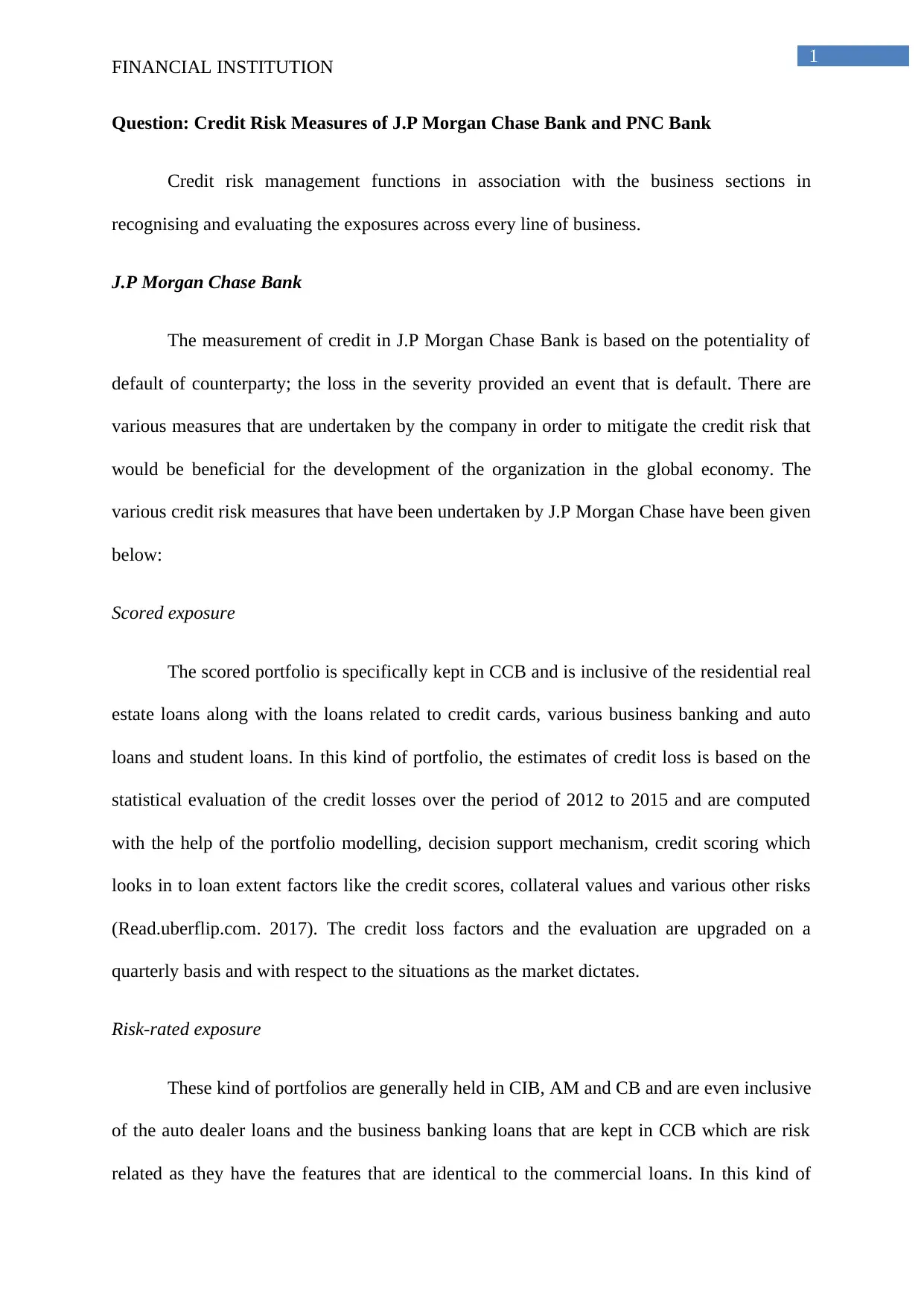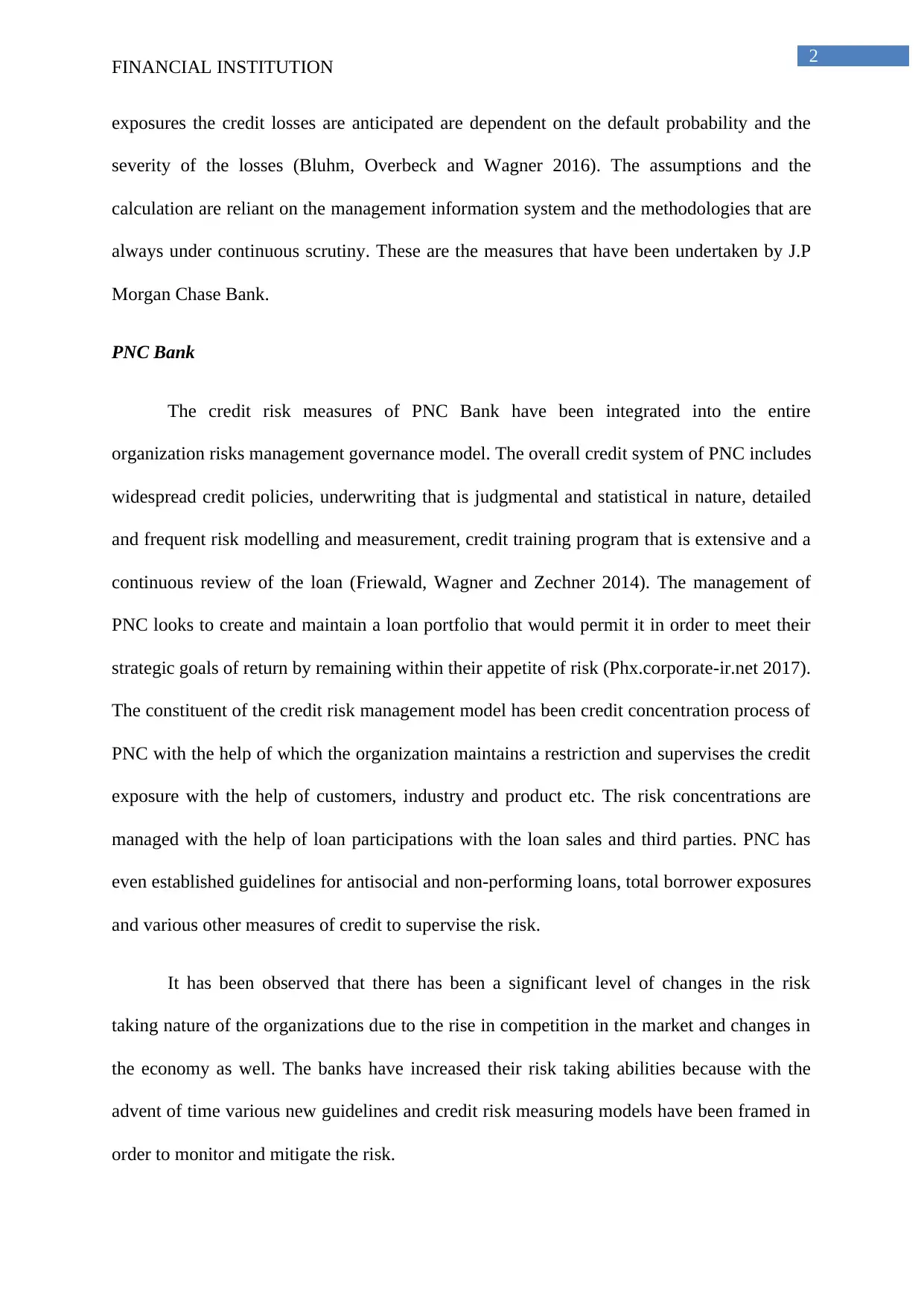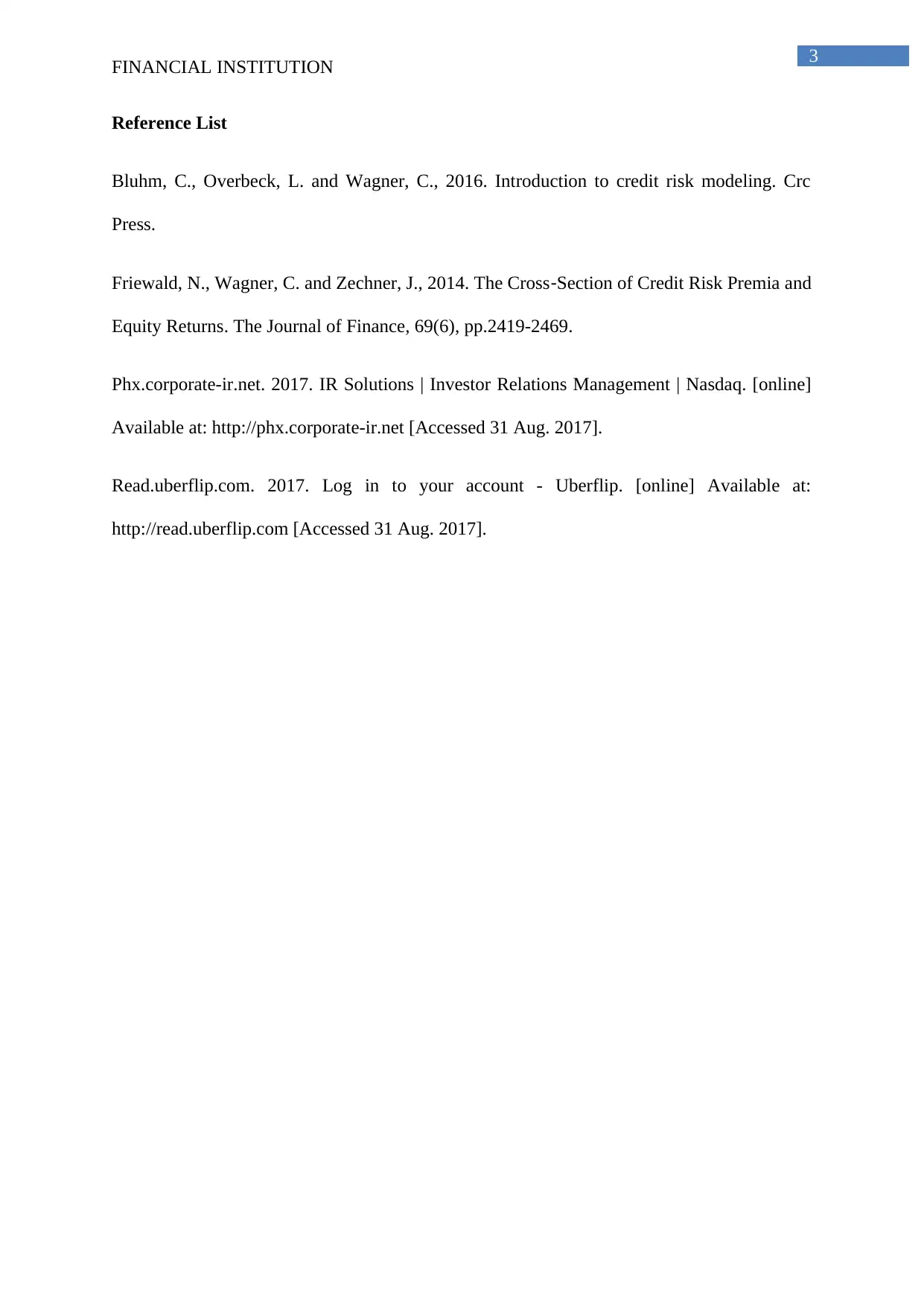Credit Risk Measures Comparison: J.P. Morgan Chase Bank & PNC Bank
VerifiedAdded on 2020/02/24
|4
|777
|57
Report
AI Summary
This report provides an analysis of the credit risk measures employed by J.P. Morgan Chase Bank and PNC Bank. It examines the methods used by J.P. Morgan Chase, including scored exposure and risk-rated exposure, to assess and mitigate credit risk across various portfolios. The report also delves into PNC Bank's integrated credit risk management model, highlighting its credit concentration process and guidelines for managing credit exposure through customer, industry, and product diversification. Both banks employ different strategies, influenced by market competition and economic changes, to monitor and manage risk, ensuring they meet their strategic goals while staying within their risk appetite. The report includes references to support the analysis of the credit risk measures of both financial institutions.
1 out of 4






![[object Object]](/_next/static/media/star-bottom.7253800d.svg)